November itinerary in Japan Day 1 (Nagasaki Day 1)
(Monday, November 15th)
Table of contents
2. Saruku (Dejima, Megane-bashi, Daikoji Temple)
I went on a trip to Nagasaki and Fukuoka prefectures for 5 nights and 6 days from November 15th (Monday) to November 20th (Saturday). This time as well, I created the itinerary from prefectures with a large amount of fish and shellfish that will be in season in November. Nagasaki and Fukuoka prefectures were 2nd and 4th in the national ranking. In addition, I was able to eat many local dishes from Nagasaki and Fukuoka prefectures (selected by the Ministry of Agriculture, Forestry and Fisheries).
In addition, for this trip as well, I sent luggage such as clothing to the accommodation in advance and carried out a “luggage-free trip” without carrying large luggage. “luggage-free trip” is easy while traveling, and it has also helped me to make effective use of my time. I sent the clothes I wore from my last accommodation to a laundry agency, so it was an easy trip without having to do the laundry.
1. Takashima
Early in the morning, I traveled from Haneda Airport (departing at 7:40) to Nagasaki Airport (arriving at 9:35) by Japan Airlines flight JL605. After landing the plane, I took a bus departing from Nagasaki Airport at 9:55 to Nagasaki Station (arriving at 10:38). The fare was Yen 1,000. Since it takes 43 minutes from the airport to the station, Nagasaki Airport is a relatively long airport to the center.
After arriving at Nagasaki Station, I moved from Nagasaki Port Terminal to Takashima. The purpose of sightseeing in Takashima is to visit the world heritage site, “Sites of Japan’s Meiji Industrial Revolution: Iron and Steel, Shipbuilding and Coal Mining”. The ships I boarded are as follows.
Depart Nagasaki Port Terminal at 11:50, high-speed ship “Shunkan” , arrive at Takashima at 12:27
Round-trip fare: Adults (junior high school students and above) Yen 2,080, Children (elementary school students) Yen 1,040
Healthy fishing pack: Adults (junior high school students and above) Yen 2,230, Children (elementary school students) Yen 1,120
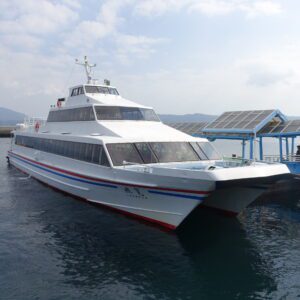
The high-speed ship “Shunkan” call at Iojima on the way. The name Shunkan of the high-speed ship is because there is a tomb of Shunkan on Iojima. Shunkan was a monk in the Heian period and was an aide to Emperor Go-Shirakawa, but was exiled to the island due to a plot to subdue the Taira clan. That island is called Iojima. However, there are various theories such as Iwo Jima in Kagoshima Prefecture.
After landing on Takashima, I rented a bicycle and cycled around Takashima. The rental cycle was cheap at Yen 500 for 5 hours with an electrically power assisted bicycle. Takashima is a small island that takes about 30 minutes to go around by bicycle, so it was perfect for hanging out on a rental cycle.
Takashima’s World Heritage Site is the “Hokkeii mine site,” which is the first modern vertical shaft in Japan to introduce a steam engine. However, it is not fun to visit just because there is a shaft trace. When I visited, there were no other visitors, and only a few cats slept comfortably.
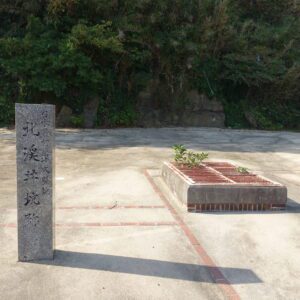
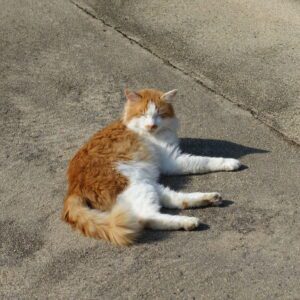
There is “Glover Villa Ruins” in the immediate vicinity of “Hokkeii mine site”. It is the villa of Thomas Blake Glover who built the former Glover Residence of “Glover Garden” famous for tourists. Currently, there are no buildings left. As a location, it is a very nice place where you can see the East China Sea and Nagasaki city. Glover operated the Takashima Coal Mine (started operation in 1868) as a joint venture with the Saga Domain. Then, in 1881, the Takashima Coal Mine was transferred to Yataro Iwasaki and supported the Mitsubishi Group. Therefore, there is also a statue of Yataro Iwasaki on Takashima. The Takashima Coal Mine was closed in 1986.

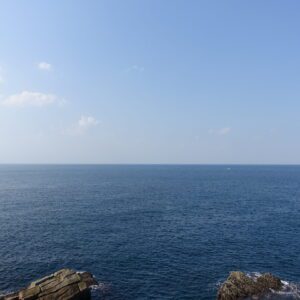

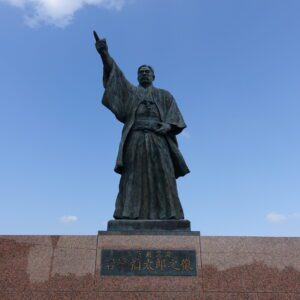
Many people left the island after the Takashima Coal Mine was closed. Therefore, although not as much as Hashima (Gunkanjima), the ruins of the former factory and uninhabited houses are still being abandoned. The sad thing is that the ruins of houses are progressing, even though some of them are still inhabited.
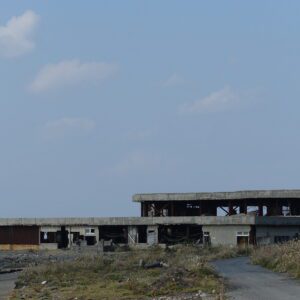
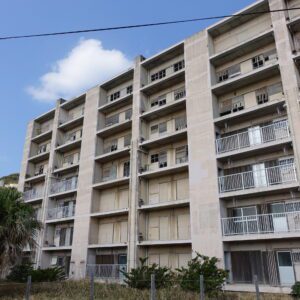
The biggest attraction of sightseeing in Takashima is that Hashima (Gunkanjima) looks beautiful. Hashima Coal Mine, along with Takashima Coal Mine, is one of the constituent assets of the World Heritage Site. Hashima is called “Gunkanjima” and is visited by many tourists. I also landed on “Gunkanjima” when I visited Nagasaki last time. The first photo is Gunkanjima taken from Takashima, and the second photo is taken during the Gunkanjima cruise when I visited Nagasaki last time.
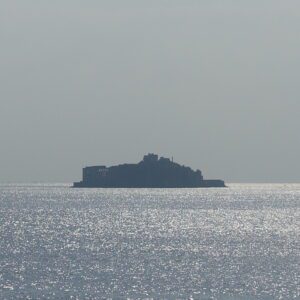
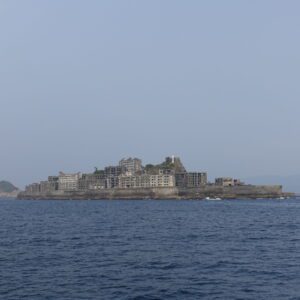
On the Gunkanjima Cruise, the ship approaches near Gunkanjima, so you can see Gunkanjima in more detail and you can also land. However, the tour is popular and you spend time with many people. On the other hand, on Takashima, I was able to take a leisurely look at Gunkanjima in the absence of anyone. It was a luxurious time to feel like I was monopolizing Gunkanjima. I couldn’t see it because I left Takashima early, but I thought that Gunkanjima with the sunset in the background might look very beautiful.
This time, I bought a healthy fishing pack (Yen 2,230 for adults) and went to Takashima. A healthy fishing pack is a pack ticket that includes a round-trip boarding ticket (adults Yen 2,080) and a Takashima Iyashi-no-Yu facility (Healing Hot Spring) use ticket (1,020 yen), or an admission ticket to Takashima Tobishima Fishing Park (510 yen). After going around Takashima by bicycle, I enjoyed thalassotherapy at Takashima Healing Hot Spring. A swimsuit and a swimming cap are required for admission. You can bring it in, but you can also rent it for a rental fee of 310 yen. I was able to cycle slowly, soak in hot water and enter the sauna, and I was very relaxed.
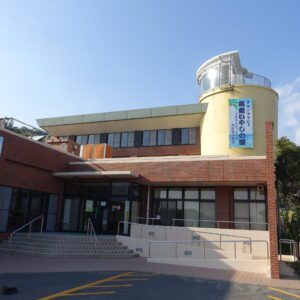
After leaving Takashima Iyashi no Yu, I left Takashima at 15:00 and arrived at Nagasaki Port Terminal at 15:36. It was a short trip of just over 3 hours on the round trip from Nagasaki Port Terminal, but I was satisfied with the extraordinary feeling.
2. Saruku (Dejima, Megane-bashi, Daikoji Temple)
I took a walk in Nagasaki city on the way from Nagasaki terminal to Sofukuji Temple, a national treasure. Nagasaki is a city with many cultural properties and it is fun to take a walk. The Nagasaki International Tourism Convention Association also sells walking in Nagasaki city to tourists as “Nagasaki Saruku”. “Saruku” is a Nagasaki dialect that means walking around the city.
There are trams running in Nagasaki city, and it has a taste. I like the city where trams run. The Nagasaki tram opened in 1915 and has a history of more than 100 years. I think it is also a feature that there are many retro vehicles like the one in the picture. In addition, Nagasaki Electric Tramway Co., Ltd., which operates trams, owns the oldest wooden bogie car in Japan made in 1911 (Meiji 44), although it is not operated except during anniversaries and events.

You can see the restored Dejima in the city. I am surprised that the window to the world of Japan in the Edo period was such a small place. I didn’t go this time because I visited Dejima last time. However, if you have never been there, it will be fun to see the inside of Dejima.
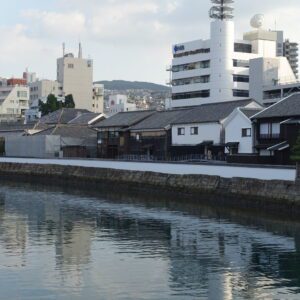
Megane-bashi is the oldest existing arched stone bridge designated as a national important cultural property. It is said that it was built by the Zen Master Mozi Ruding of Kofukuji Temple in 1634. It is one of the famous sightseeing spots in Nagasaki.
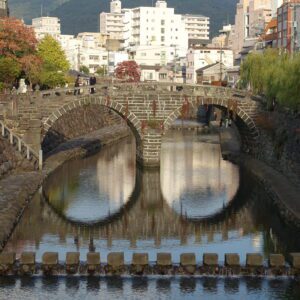
Daikoji is a temple of the Jodo Shinshu sect near Sofukuji. It was founded in 1614 by the monk Keiryo. There is a statue of Shinran saint in the back of the mountain gate.
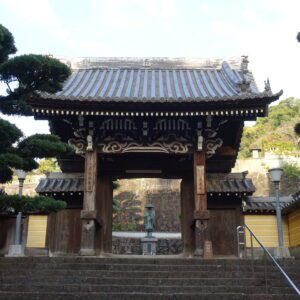
3. Sofukuji Temple
I arrived at Sofukuji Temple in about 20 minutes on foot from Nagasaki Port Terminal. I went to Sofukuji Temple last time, but I couldn’t forget its splendor, so I visited again this time.
Sofukuji Temple was founded in 1629 by a Tang monk, Chonen who was invited by overseas Chinese from Fujian Province who was trading in Nagasaki. It is the oldest Chinese-style temple in Japan. It is now a temple of the Obaku sect, which is a Zen sect.
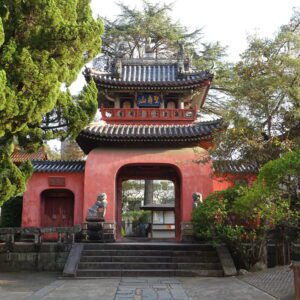
The Daiipomon and the Daiyuhoden are national treasures. The only national treasure buildings in Nagasaki Prefecture are Sofukuji Temple and Oura Catholic Church. In addition, there are five national important cultural properties (including four buildings) at Sofukuji Temple.
The admission fee is Yen 300 for adults. However, there is no staff at the entrance, just a sticker saying “Please put it in the money box in the main hall”. I went to various temples, but only Sofukuji was in the form of collecting the admission fee in a money box. Last time, I overlooked this poster and didn’t pay the admission fee, so this time I put the admission fee for two times in the money box.
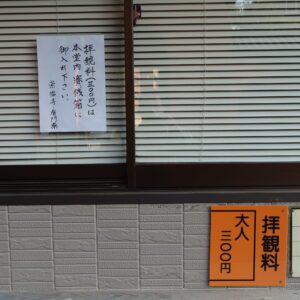
There are many cultural properties such as those mentioned above at Sofukuji Temple, but I was the only visitor both last time and this time. It is strange that many tourists go to Oura Catholic Church, which is the same national treasure. I think this is because Sofukuji is not listed in guidebooks.
In fact, Sofukuji Temple is not listed in “21 Recommended Sightseeing Spots in Nagasaki City” on Ikkyu.com, and is ranked 30th on TripAdvisor and “Recommended Sightseeing Spots in Nagasaki City in November” by Jaran. Sofukuji Temple finally appears in 61st place. Although Sofukuji is a national treasure, it is a mysterious place called a little-known spot. That’s why I can monopolize Sofukuji Temple, so I would highly recommend it to everyone.
The Daiipomon of the national treasure is the gate on the stairs. The structure under the eaves of the gate is complicatedly assembled, and the colors are also very nice.
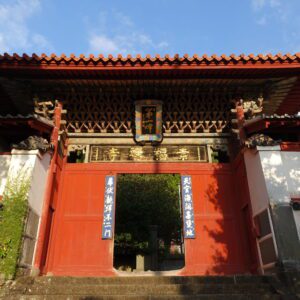
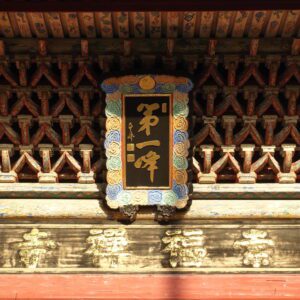
The Daiyuhoden is the national treasure and is a Buddhist temple whose principal image is Shaka. It is the oldest existing building in Nagasaki City. The roof that spreads wide to the side is wonderful. The principal image, Shaka, also has a really nice face.

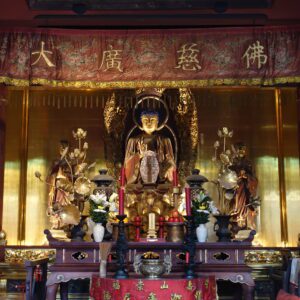
National important cultural properties are Sanmon (Romon), Gohodo (Kantei-do and Kannon-do), Maso-mon, and Bell Drum Tower. All are wonderful buildings.
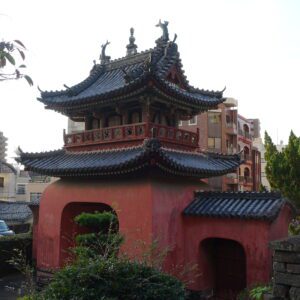


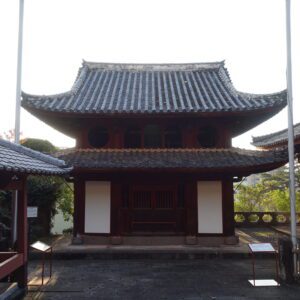
After dinner, I moved by bus from the Nagasaki station bus terminal to the Sasebo station bus center. I wanted to travel by JR limited express train, but since there is no limited express train between Nagasaki Station and Sasebo Station, I had no choice but to travel by bus. In Nagasaki Prefecture, Nagasaki City has the highest population and Sasebo City has the second highest population. I think it is extremely rare that limited express trains do not operate between the 1st and 2nd cities in the same prefecture. Is the historical background that the current Nagasaki city was the Tenryo of the Shogunate and the current Sasebo city was the Hirado domain in the Edo period affecting the current traffic? Nagasaki Station and Sasebo Station are separately connected to Saga Station in Saga Prefecture and Hakata Station in Fukuoka Prefecture by direct express trains.
Note: The departure / arrival times and fares of transportation, facility admission fees, meal fees, etc. listed in the text are as of the time of writing the BLOG. Please check for yourself when you go on a trip as it may change in the future.